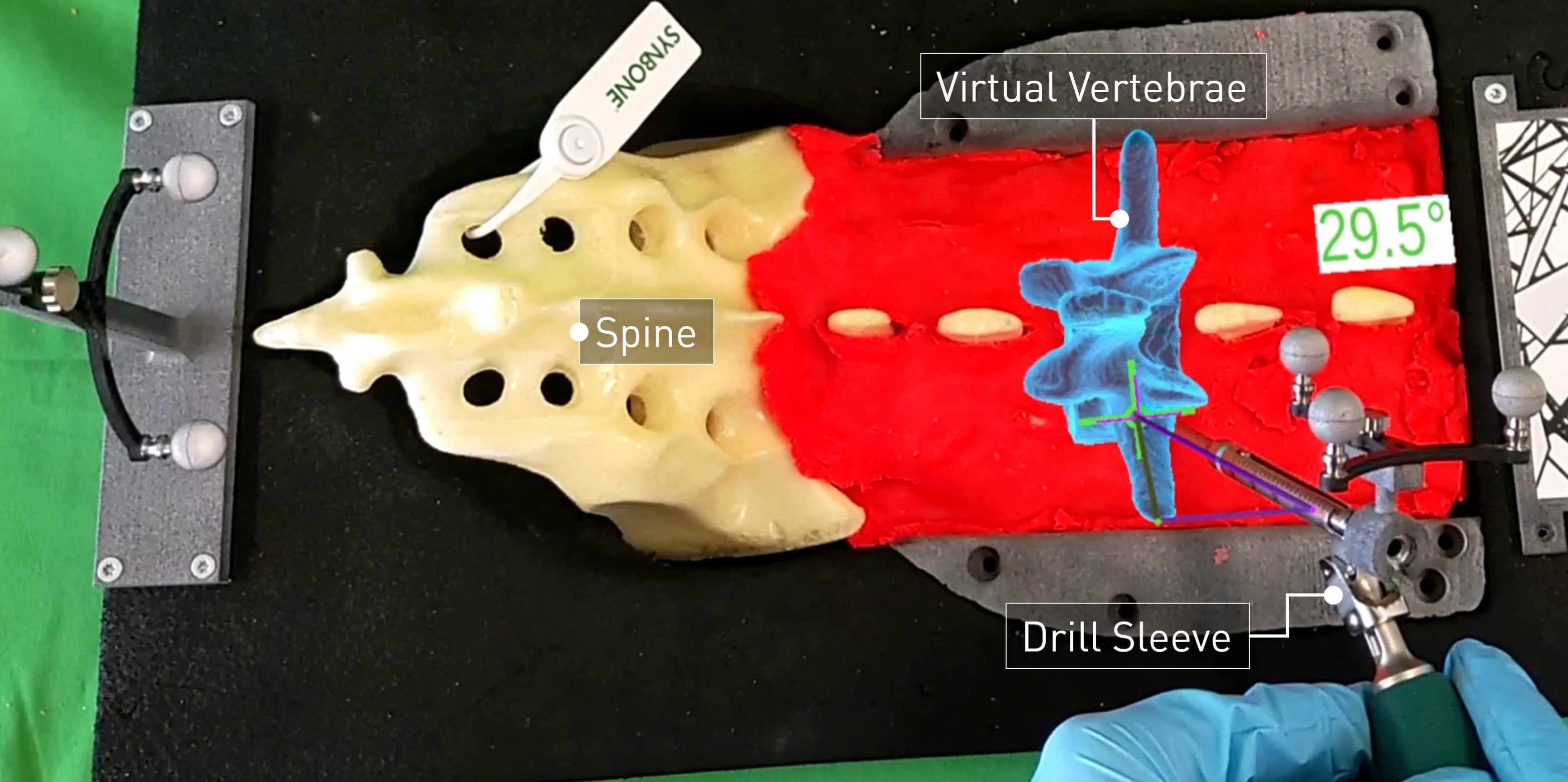Effective Visualization Strategies in Augmented Reality
How can augmented reality (AR) effectively assist surgeons while drilling into the spine? We answer this question in our recently published study, where we investigated the effect of AR visualizations on operators’ accuracy, visual attention, and user experience.

Using accurate and easy-to-use visualizations for surgical navigation is important to assist surgeons effectively during a procedure. As part of the Hochschulmedizin Zürich (HMZ) Flagship Project external page SURGENT, we compared 5 different augmented reality (AR) visualizations for surgical drilling with variations in abstraction level (abstract or anatomic), position (overlay or small offset), and dimensionality (2D or 3D). We tested these visualizations in a study with 4 expert surgeons and 10 novices (residents in orthopedic surgery) on lumbar spine models covered by Plasticine.

Our results show that real-time feedback provided by navigation can level task performance between experts and novices, and that the design of a visualization has a significant impact on task performance, visual attention, and user experience. Both abstract and anatomical visualizations can be suitable for navigation when not directly occluding the execution area.
Our results shed light on how AR visualizations guide visual attention and the benefits of anchoring information in the peripheral field around the entry point.
Our publication How different augmented reality visualizations for drilling affect trajectory deviation, visual attention, and user experience is available as open access. external page View full paper
Eye tracking research of pd|z has played a key role in the HMZ flagship project SURGENT since 2018.
For more information, please contact Julian Wolf
